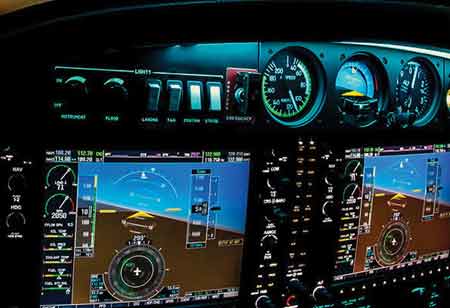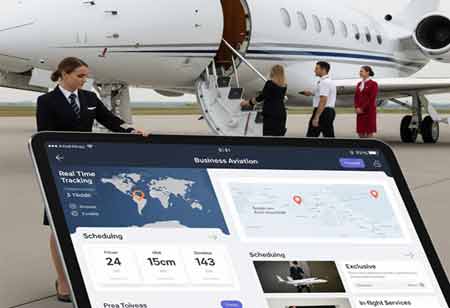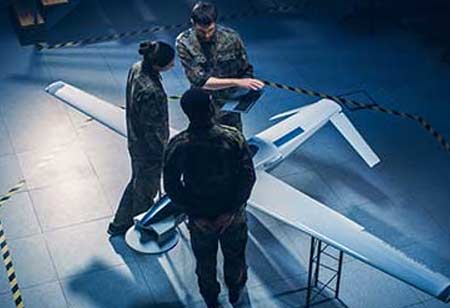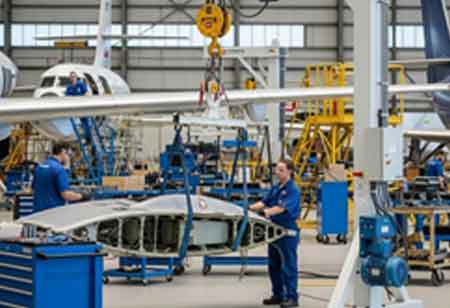The aviation sector has experienced a remarkable transformation driven by advancements in avionics, electronic systems that ensure navigation, communication, monitoring, and flight control. The growing complexity of aircraft, demand for safer and more efficient operations, and the transition to next-generation aircraft have significantly elevated the importance of avionics product suppliers. From commercial airlines and military jets to drones and private aircraft, avionics systems are the backbone of modern aviation.
The systems contribute to flight safety, fuel efficiency, regulatory compliance, and enhanced passenger experience. As global fleets expand and aging aircraft undergo modernization, the need for high-quality, reliable, and technologically advanced avionics products is greater than ever. This shift has turned avionics suppliers into key stakeholders in the aerospace value chain, tasked with pushing innovation while ensuring compliance and reliability.
Key Market Drivers and Technological Implementation
Several critical factors drive growth in the avionics product supplier market. The global expansion of air travel has increased demand for newer, more capable aircraft and retrofit solutions. Airlines invest in advanced avionics for better route planning, enhanced weather tracking, reduced pilot workload, and real-time communication. Stricter safety regulations from authorities such as the FAA and EASA mandate the use of up-to-date navigation and surveillance systems. Another significant factor is the boom in defense aviation, where combat readiness, autonomous targeting, and secure communication rely heavily on advanced avionics systems.
The implementation of technology in avionics has been nothing short of revolutionary. Fly-by-wire systems have replaced traditional manual controls, enhancing response time and reducing human error. AI and ML are increasingly embedded into avionics platforms for predictive maintenance, system optimization, and autonomous decision-making. Integration with 5G networks and cloud computing has made real-time data transfer and remote diagnostics a reality.
Modular avionics architecture is another advancement that allows aircraft systems to be upgraded without a complete overhaul, lowering lifecycle costs and increasing adaptability. Cockpit displays, previously dominated by analog instruments, are now primarily digital, featuring customizable and intuitive touchscreens that offer enhanced functionality. The developments improve pilot efficiency and situational awareness. Meanwhile, ground control and air traffic systems are increasingly synchronized with onboard avionics, fostering a more connected and responsive aviation ecosystem.
Applications and Expanding Use Cases
The avionics product supplier market is witnessing several dynamic trends that reflect customer demands and technological capability. Avionics suppliers are adapting systems to support autonomy, lightweight construction, and AI-powered flight controls. Avionics systems are being designed to help reduce fuel burn through optimal route planning and aircraft performance monitoring. The development of green avionics contributes to lowering carbon emissions and aligns with broader environmental goals in the aviation industry. Avionics suppliers benefit from the increasing demand for retrofitting older aircraft.
With many airlines deferring fleet replacement post-pandemic, upgrading avionics has become a cost-effective method for complying with new airspace requirements and improving flight efficiency. These retrofits include updated FMS (Flight Management Systems), enhanced communication radios, and collision avoidance systems. Avionics systems have diverse and mission-critical applications. In defense, avionics support radar systems, weapons control, and mission-specific instrumentation. Safety features like terrain awareness and synthetic vision are vital for general aviation and helicopters.
Avionics suppliers now work closely with aircraft manufacturers (OEMs), MRO providers, and defense contractors to co-develop systems that meet custom needs. This collaborative model accelerates innovation and allows for better product integration, testing, and certification. To enhance lifecycle performance, suppliers also offer aftermarket support services, such as real-time system diagnostics, software updates, and remote assistance.
Solutions and the Growing Market Need
Supply chain disruptions, triggered by geopolitical tensions, component scarcity, and rising raw material costs, affect production timelines and availability. Suppliers are investing in modular and scalable system architectures that can be easily adapted or updated. Digital twins and simulation environments are being used to test systems virtually, reducing development time. Cloud-based platforms are enabling remote collaboration, speeding up prototyping and certification workflows. Training programs and academic partnerships are being fostered to address the talent gap.
The growing need for avionics products is evident across all aviation segments. Commercial airlines aim to differentiate themselves through reliability and passenger experience, both driven by advanced avionics. Defense ministries prioritize situational awareness and survivability, supported by mission-specific systems and technologies. New aviation entrants, such as air taxis and autonomous drones, rely entirely on intelligent avionics to navigate urban skies safely and efficiently. As airspace becomes more crowded and operational complexity increases, avionics will remain the foundation for safe, efficient, and intelligent aviation.
The avionics product supplier market is experiencing robust growth, fueled by digital transformation, regulatory evolution, and expanding aviation needs. Suppliers are at the forefront of shaping the future of flight, delivering smarter, safer, and more efficient systems. Through ongoing innovation, strategic collaboration, and a commitment to excellence, avionics suppliers play a pivotal role in the evolution of the global aerospace industry. As aircraft evolve, the demand for sophisticated, integrated, and reliable avionics systems will only increase, cementing the supplier’s role as a cornerstone of aviation advancement.









